Does Tulsi Plant Produce Oxygen In Night Time? Mechanism of Action
by Lee Safin
If you are a HINDU, then I am pretty sure that you are very sensitive about the Tulsi Plant. However, I beg your pardon in the beginning I do not maintain the proper ritual. So, we are talking about the Tulsi plant. Ocimum tenuiflorum is the scientific name for the Tulsi plant. Every day, Tulsi plants release ozone for four hours and oxygen for 20 hours out of 24 hours.
But the question is, does tulsi plant produce oxygen in night time?
Yes! Tulsi plant produces oxygen in the nighttime but not a large amount of oxygen like in day time. But for that, you need to keep them in light conditions. It is because no plants can produce oxygen without lights.
They produce oxygen due to the photosynthesis process, which occurs for every plant during the daytime.
Contents
- Does Tulsi Plant Produce Oxygen In Night-Time?
- Why Do Tulsi plants Release Oxygen at Night-Time?
- Which Type of Light Conditions do You Need to Ensure for Tulsi plants?
- Does Tulsi Plant Release Oxygen 24 Hours?
- Which Plant Give Oxygen 24 Hours?
- Can We Plant Tulsi At Night?
- Why Tulsi Plant Dies Suddenly?
- Imbalanced Watering
- Inappropriate Pest Control
- Due to Chemicals
- Brown Leaves Can Be a Sign!
- Can Ladies Pluck Tulsi Leaves?
- Types of Tulsi Plants
- How To Water Tulsi Plant?
- Where To Keep The Tulsi Plant?
- How To Look After Tulsi Plants?
- Conclusion

Does Tulsi Plant Produce Oxygen In Night-Time?
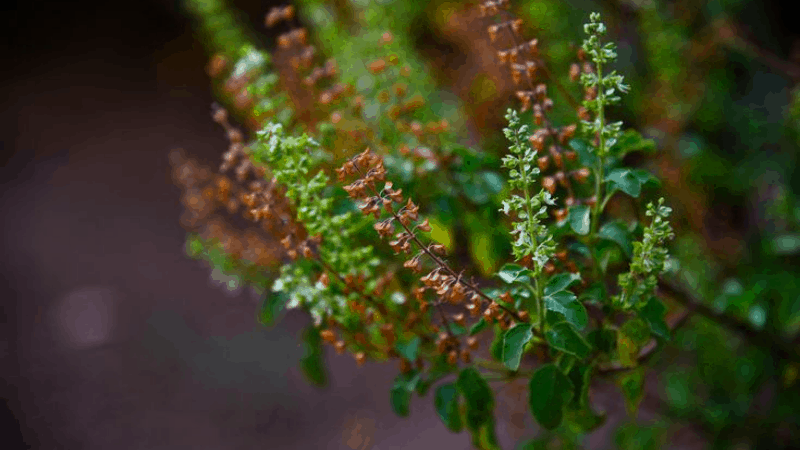
In the presence of natural light, photosynthesis allows plants to release oxygen during the day. As photons are used to create glucose, photosynthesis utilizes their energy. However, some plants release carbon dioxide during the night as they respire when they take in oxygen.
Carbon dioxide can, however, be absorbed by some plants like Tulsi even at night. They sustain themselves through photosynthesis by performing Crassulacean Acid Metabolism (CAM).
Not only Tulsi plants, some other plants such as Peepal, peace lily, snake plant, orchids, etc, also perform photosynthesis process. Carbon dioxide and water molecules that are essential for plant growth are created by the photosynthesis process via Tulsi plants when they are exposed to sunlight.
Why Do Tulsi plants Release Oxygen at Night-Time?
Their purpose is to prevent the loss of water caused by sunlight. The Malate is broken down by the Kalvin cycle, and the CO2 released during the day is used to produce sugar.
The oxygen-producing function of plants is impossible in darkness. Light is needed for photosynthesis to occur, as the name itself indicates. Therefore, photosynthesis does not take place in the dark.
Which Type of Light Conditions do You Need to Ensure for Tulsi plants?


Generally, natural lights such as moonlight or starlight are the best source for them as, unlike most plants, Tulsi has a unique photosynthesis system.
If you are growing a tulsi plant indoors then you should provide the best light for photosynthesis. We recommend “Juhefa Tri-Head” as the best-LED light for Tulsi Plant.
Does Tulsi Plant Release Oxygen 24 Hours?
Very few plants work as the best air purifier like Tulsi plants. This oxygen-generator plant provides 20 hours of oxygen out of 24 hours throughout the day.
Apart from releasing oxygen for 20 hours a day, they also produce ozone gases for other 4 hours. Tulsi plants purify the air by absorbing different types of harmful gases from the air, such as carbon dioxide, carbon monoxide, sulfur dioxide, etc.
Which Plant Give Oxygen 24 Hours?
Nowadays, we realize indoor air quality is not always the cleanest in this environmentally aware world. We are using air-purifier devices to purify our internal environment.
What about adding a few houseplants to your environment to help purify your air naturally while also adding oxygen?
Several plants can do the job –
- Spider Plant
- Aloe Vera
- Tulsi Plant
- Philodendrons
- Weeping Fig
- Pothos
- Peace Lily
- Chrysanthemum
- Snake Plant
Can We Plant Tulsi At Night?
No, we should not plant tulsi at night. Tulsi requires warm temperatures to germinate since it is a tropical plant. The temperature of the surrounding environment should be at least 70 degrees. That’s why planting Tulsi plants during the sunlight is the best time. If you want to plant Tulsi at night, seedling heat mats can be used to warm the soil temperature.
Why Tulsi Plant Dies Suddenly?
Tulsi plants may die for different reasons. Tulsi plant usually dies in winter. If you are interested to know more about “Why tulsi plant dies in winter?” check our latest article.
Imbalanced Watering

There is a high requirement for water for Tulsi, especially in the summer season. A morning watering will dry up it by evening.
Using plastic pots to slow evaporation does not protect your Tulsi plants from this problem. However, you can neither water them too excessively nor too deficiently.
A perfect balance should be followed for watering them. Otherwise, watering in an unbalanced way may be the cause of death.
Inappropriate Pest Control
Pests can also pose a problem. When unexpected plant death isn’t the result of watering issues, see if there are signs of insects.
Detecting certain pests is challenging. For instance, cottony masses indicate the presence of mealybugs, which usually appear at joints or on the underside of leaves.
To get the best natural insecticides, check the article.
Due to Chemicals
Though there is less chance of this occurring, ensure your indoor plants haven’t been exposed to toxic substances like herbicides.
Apart from that, ensure that fertilizer or other chemicals haven’t been sprayed on the leaves.
Brown Leaves Can Be a Sign!
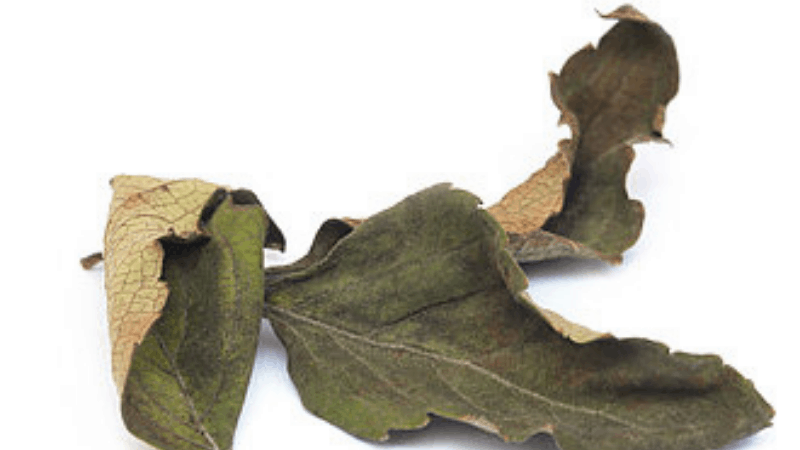
A houseplant whose leaves have turned brown but still alive might be affected by different diseases. It may be an early sign of death.
Other Reasons
- Too much or too low sunlight
- Fungal diseases
- Over-fertilizing
- Lack of humidity
- Planting plants in too small pots
- Unhealthy surroundings
Can Ladies Pluck Tulsi Leaves?
No, ladies can not pluck Tulsi leaves. It will be a dishonour to Lord Vishnu. Because of the connection, it has with Lord Vishnu, Tulsi is considered the most sacred plant by Hindus. Tulsi has traditionally believed to be Lord Vishnu’s wife. It is disrespectful to chew Tulsi leaves. Those thoughts are religious.
So, Tulsi leaves are considered sacred plants among Hindu communities, which is why women cannot pick them.
Types of Tulsi Plants
Though there are around 18 types of Tulsi worldwide, 4 types of Tulsi are most popular globally, especially in India.
RAMA TULSI
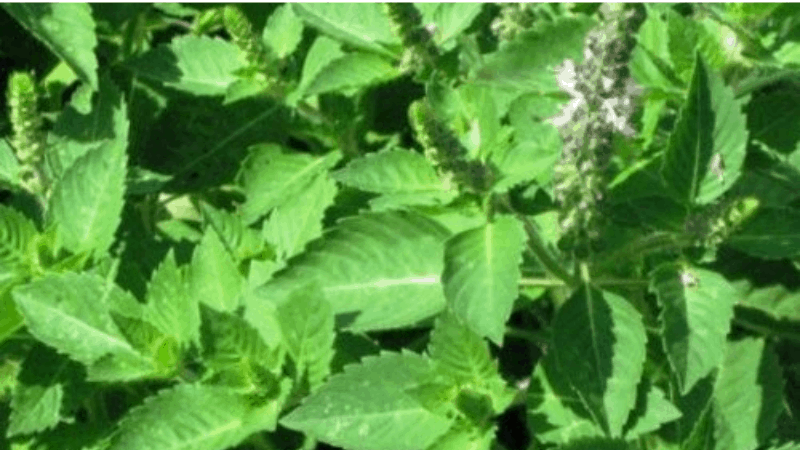
The Rama Tulsi is a member of the Tulsi Species of basil, also known as Holy Basil. Indians revere it for its holistic medicinal value, as it is considered a pillar of holistic herbal medicine.
It bears fragrant, purple flowers on purple stems. This plant is known for its mellow flavour and cooling effect.
KRISHNA TULSI
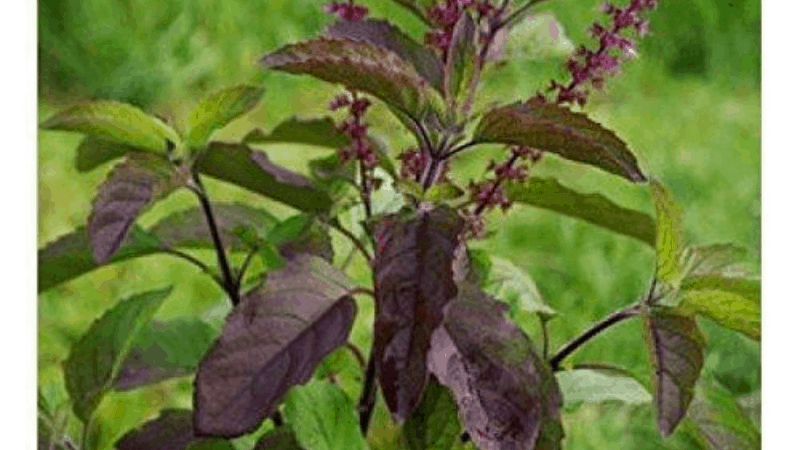
Purple leaf Tulsi is another name for this type of Tulsi, which has a clove-like fragrance. The taste of Krishna Tulsi is similar to pepper.
Medicinal properties of Tulsi such as these may help to cure different health issues.
- Skin diseases
- Cure throat infections
- Earaches
- Respiratory problems
AMRITA TULSI
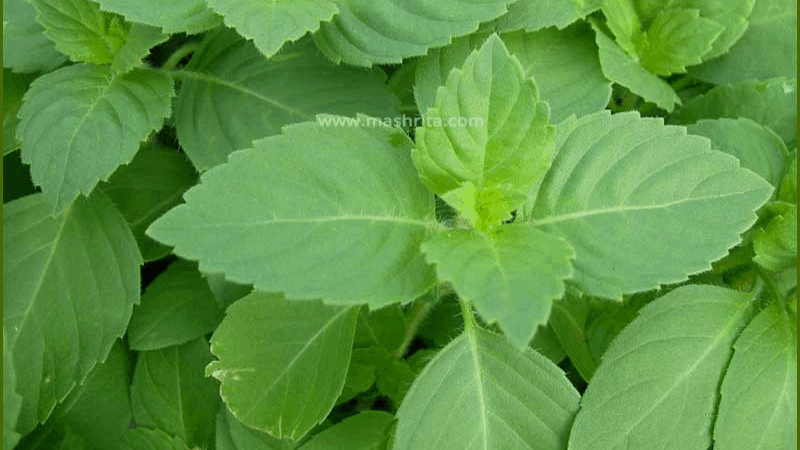
There are several different names of Amrita Tulsi, including tea basil, holy basil, and Tulasi. Plants of the Lamiaceae family are indigenous to the Indian subcontinent and are aromatic in nature. Its taste is pleasant, and its stimulation is pleasing to the mind, body, and spirit.
VANA TULSI
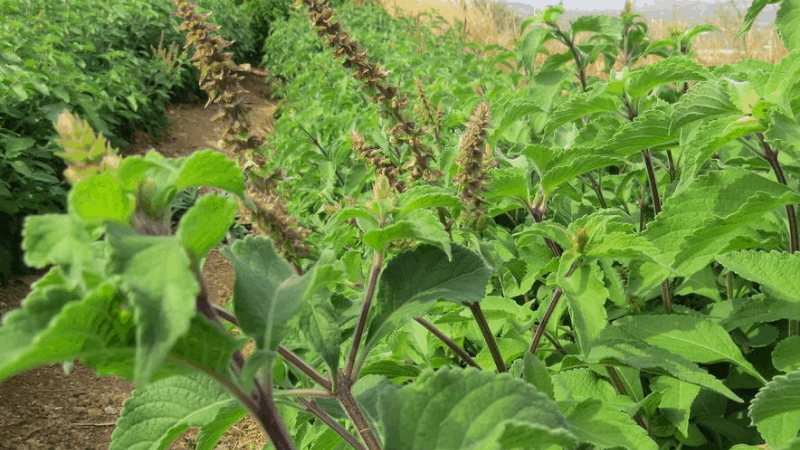
Wild basil and holy basil are other names for Vana Tulsi. There is a similar fragrance between the Vana Tulsi and clove, which makes it popular. Mercury and iron are released when these Tulsi leaves are chewed.
How To Water Tulsi Plant?
Overwatering the Tulsi plant may decrease the actual lifespan of this plant. Unless the soil becomes fully dry, you don’t need to water the Tulsi plant. Additionally, the rainy season means less frequent watering of the plant.
Where To Keep The Tulsi Plant?
Though you can keep the Tulsi plant on the partial sun, it is best to keep them on the full sun for at least 5-8 hours every day. However, the plant should remain shaded during winter because the temperature may fall and cause it to rot.
Actually the question “Does Tulsi Plant Produce Oxygen In Night Time?” comes from here. If you can not keep them under light for 5-8 hours, they will not produce enough oxygen in the nighttime.
How To Look After Tulsi Plants?
Maintain Soil pH
Loamy or fertile soil is ideal for growing Tulsi. Healthy plants require good drainage. You should aim for a pH level of 6 to 7.5 in the soil.
Do mulching for your Tulsi plants (3 inches). Mulches like this minimize weed growth, manage moisture, and moderate temperature variations
Maintain Temperature
Depending on the varieties, these plants can survive up to zone 10. Temperatures rarely plunge below 50oF are best for growing this herb. Growing Tulsi outdoors year-round in a climate free of frost is possible. They are also perfect houseplants since they don’t grow huge.
Ensure Proper Feeding
No products found.
No products found.
Providing your Tulsi plant with regular nourishment will ensure that it stays healthy. Plants can obtain all the nutrients they require from a balanced 10-10-10 fertilizer.
It is recommended that you feed your holy basil plants every two weeks. Water-soluble fertilizers make it easy to include them in your routine when you water your plants.
Pruning Regularly


This is the best pruning shear at a cheap price. It’s efficiency is fantastic.
Keep your Tulsi plant under control by pruning regularly. Avoid removing more than half the stem when pruning.
Read More – How to revive a dying Tulsi Plant?
Conclusion
We are pretty sure that you got the answer to “Does Tulsi Plant Produce Oxygen In Night Time?”
However, there are lots of benefits, having Tulsi plants at home. Apart from being an excellent source of oxygen, it provides several health benefits too. Hopefully, you have gotten a clear idea about this question, “does the Tulsi plant produce oxygen in the nighttime?” Happy Gardening!
Last update on 2023-01-28 / Affiliate links / Images from Amazon Product Advertising API
 |
 |
 |
 |

About Lee Safin
Lee Safin was born near Sacramento, California on a prune growing farm. His parents were immigrants from Russia who had fled the Bolshevik Revolution. They were determined to give their children a better life than they had known. Education was the key for Lee and his siblings, so they could make their own way in the world. Lee attended five universities, where he studied plant sciences and soil technologies. He also has many years of experience in the U.S. Department of Agriculture as a commercial fertilizer formulator.
Thoughts on "Does Tulsi Plant Produce Oxygen In Night Time? Mechanism of Action"
 |
 |
 |
 |
Get FREE Gardening Gifts now. Or latest free toolsets from our best collections.
Disable Ad block to get all the secrets. Once done, hit any button below
 |
 |
 |
 |